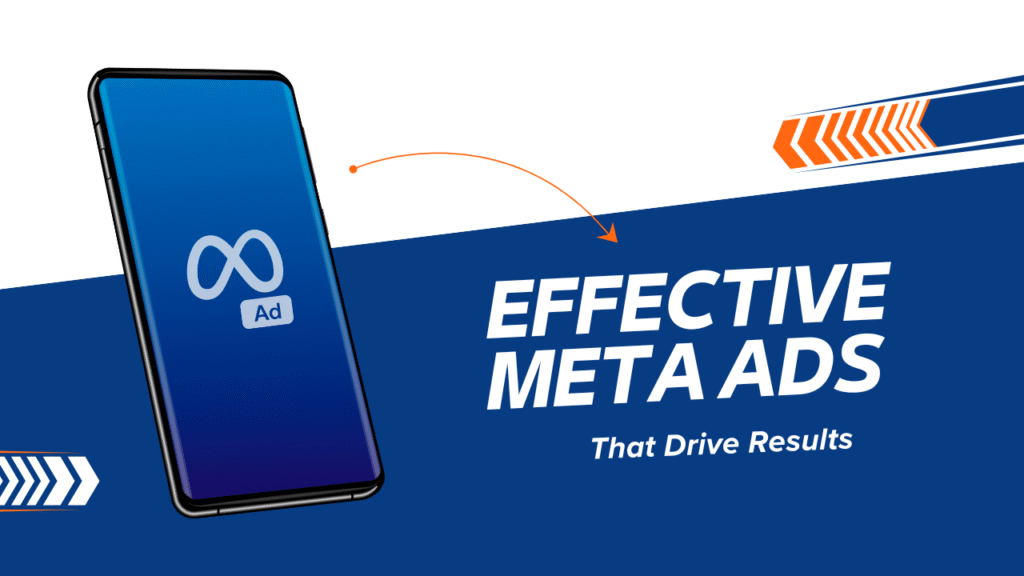Online advertising has transformed dramatically over the past decade, and Meta Ads (formerly known as Facebook Ads) remain a cornerstone for businesses aiming to grow their brand, connect with customers, and boost conversions. With billions of active users across Facebook, Instagram, Messenger, and the Audience Network, Meta provides an unmatched advertising ecosystem for marketers who want to get results fast and efficiently.
But running Meta Ads isn’t just about boosting posts or putting money behind a creative. It’s about strategy, targeting, content, testing, and optimization. In this blog, we’ll walk through how to create high-performing Meta Ads that truly drive results for your business.

Understand Your Audience First
Before writing a single line of ad copy or choosing an image, you need to know who you’re speaking to. Meta’s power lies in its targeting capabilities. You can target users based on demographics, interests, behaviors, and even lookalike audiences.
Start by creating a detailed customer persona. Identify their age, location, income, challenges, goals, and where they spend most of their time online. Once you know who your ideal customer is, your ad strategy becomes more focused and effective.
Set Clear Objectives
Every successful campaign begins with a goal. Meta offers various ad objectives such as:
- Brand awareness
- Traffic
- Engagement
- App installs
- Video views
- Lead generation
- Conversions
- Catalog sales
Choose the objective that aligns with your business goals. If your goal is to collect leads, don’t run an ad optimized for video views. Meta’s algorithm performs best when your campaign objective matches your true intention.
Craft Compelling Ad Copy
Your ad copy should speak directly to your audience’s needs and desires. Use simple, conversational language that clearly communicates value.
A few tips:
- Lead with a hook or attention-grabbing question
- Highlight benefits, not just features
- Create urgency with time-sensitive offers
- Use clear CTAs like “Shop Now” or “Sign Up Today”
- Keep it short and punchy (especially for mobile users)
For example:
“Struggling with dry skin this winter? Discover our all-natural moisturizer that hydrates in just one use. Shop now and get 20% off!”
Choose High-Quality Visuals
The image or video you choose plays a crucial role in whether people stop scrolling. Visuals should be relevant to your message, high resolution, and optimized for different placements (feed, stories, reels).
Videos under 15 seconds often perform better. Try using real customer testimonials, product demos, or eye-catching animations to engage users quickly.
Make sure your creative aligns with Meta’s ad guidelines to avoid disapproval.
Use A/B Testing to Optimize Performance
Don’t rely on guesswork. A/B testing (also called split testing) lets you compare two versions of your ad to see which performs better. You can test headlines, images, CTAs, audience segments, and more.
Always test one variable at a time so you know what’s driving the change. Over time, testing will help you refine your messaging and improve ROI.
Leverage Custom Audiences and Retargeting
Meta’s strength lies in its audience customization. Use Custom Audiences to retarget users who visited your website, engaged with your content, or added products to their cart.
Also, use Lookalike Audiences to reach new users who share traits with your existing customers. This strategy allows you to scale your campaigns effectively while keeping relevance high.
Optimize for Mobile First
Most Meta users are on mobile devices. Your ad needs to load quickly, display well on smaller screens, and communicate value within seconds.
Use vertical video formats, mobile-friendly landing pages, and concise messaging to increase engagement. If your website isn’t mobile-optimized, you risk losing valuable traffic.
Analyze Results and Scale What Works
Once your ad is live, track performance closely using Meta Ads Manager. Key metrics to monitor:
- Click-through rate (CTR)
- Conversion rate
- Cost per result (CPA, CPL, etc.)
- Relevance score
- Frequency
Use this data to scale successful campaigns and pause underperforming ones. Always be in learning mode—the platform changes, user behavior shifts, and your ads should evolve accordingly.
Budget Wisely and Use Campaign Budget Optimization (CBO)
You don’t need a massive budget to see results. Start with a small daily amount and increase based on performance. Meta’s Campaign Budget Optimization (CBO) feature helps distribute your budget to the best-performing ad sets automatically.
This ensures you get the most out of every dollar spent, especially during testing phases.
Keep Up with Meta’s Changing Algorithm
Meta frequently updates its advertising policies and algorithms. Stay informed through Meta Business updates, webinars, and communities.
What worked last year may not work today. Being agile and ready to adapt your strategy ensures your ads stay effective.
Focus on the Full Funnel
Effective Meta advertising isn’t just about a single ad. Think in terms of the entire customer journey:
- Awareness: Introduce your brand to a new audience
- Consideration: Share value-driven content, testimonials, or lead magnets
- Conversion: Highlight offers, product benefits, and clear CTAs
- Retention: Retarget and engage with past customers
Designing your campaigns to support the full funnel improves customer experience and drives long-term growth.
Final Thoughts
Creating Meta Ads that drive results isn’t a matter of luck—it’s a skill that combines strategy, creativity, and data analysis. By understanding your audience, crafting the right message, and optimizing consistently, you set the foundation for successful campaigns.
Whether you’re a small business or a growing brand, Meta Ads offer an incredible opportunity to reach your goals. Start small, stay curious, and never stop testing.
